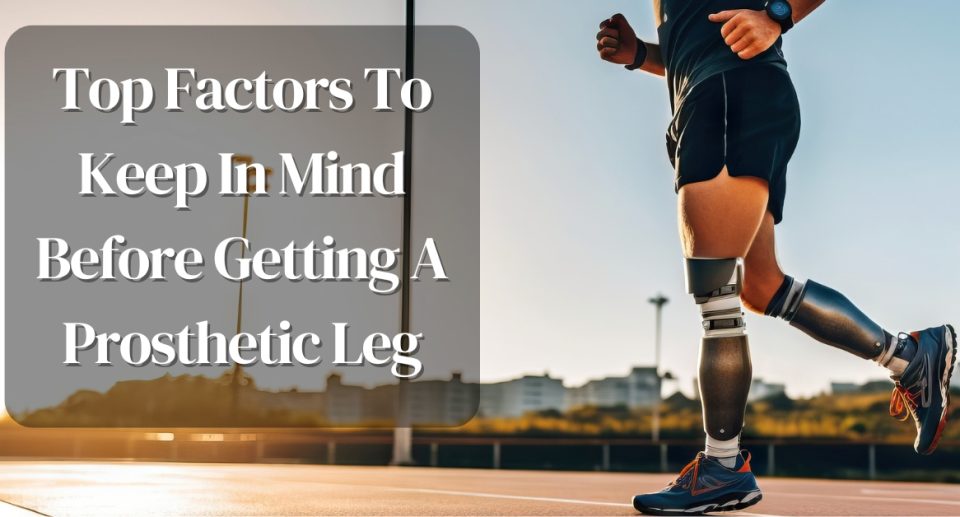Experiencing limb loss is a transformative event that demands bravery, resilience, and access to appropriate resources. Adapting to this new reality entails selecting the optimal prosthetic limb, a pivotal decision that can significantly improve the life of amputees due to technological advancements. However, before acquiring a prosthetic leg, it is crucial to consider various factors to ensure that it aligns with your requirements and lifestyle. Delve into these considerations in depth to empower yourself to make an informed choice.
Understanding Your Needs:
Level of Amputation:
The level of amputation is a fundamental determinant in selecting the appropriate prosthetic leg. Prosthetic legs are typically classified based on the site of amputation:
- Below-Knee Prosthesis (Transtibial): Designed for individuals with amputations below the knee, offering stability and enhanced mobility for diverse daily activities.
- Above-Knee Prosthesis (Transfemoral): Tailored for those with amputations above the knee, featuring a knee
- crucial for proper gait and mobility.
- Through-Knee Prosthesis: Suitable for amputations through the knee joint, requiring specialized prosthetic design for improved limb functionality.
- Hip Disarticulation Prosthesis: For hip-level amputations, necessitating a sophisticated prosthetic design to compensate for the loss of knee and hip joints.
Lifestyle And Activity Level:
Your daily routine and activity level significantly influence the type of prosthetic leg that suits you. Consider the following:
- Low Activity Level: For mostly sedentary individuals, a basic prosthetic leg focusing on stability and comfort may suffice.
- Moderate Activity Level: Those engaging in moderate physical activities may require an advanced prosthetic offering better energy return and flexibility.
- High Activity Level: Athletes and highly active individuals need specialized prosthetics designed for rigorous movement and high impact activities.
Goals And Expectations:
Establishing realistic goals and expectations is paramount when choosing a prosthetic leg. Clear communication with healthcare providers regarding your aspirations, whether walking, running, or sports participation, aids in setting achievable milestones.
Prosthetic Leg Components:
- Socket: Critical for comfort and functionality, a well-fitted socket ensures better weight distribution and reduces the risk of skin issues.
- Suspension System: Various types such as suction, pin lock, sleeve, and vacuum suspension play a vital role in securing the prosthetic leg to the body.
- Knee Joint: Different types of knee joints like single-axis, polycentric, hydraulic, and microprocessor knees offer varying levels of control and functionality.
- Foot And Ankle: Foot and ankle components come in diverse designs suitable for different activity levels, from basic stability to dynamic movement.
In Conclusion
Selecting a prosthetic leg is a significant stride towards reclaiming mobility and independence. By comprehensively understanding your needs, choosing suitable components, undergoing proper fitting and customization, engaging in rehabilitation, and seeking emotional support, you pave the way for a successful outcome.
Factor in cost, insurance coverage, and the expertise of a qualified prosthetist. With meticulous consideration of these aspects, you can find the ideal prosthetic leg to enhance your quality of life. If you seek a reputable prosthetic Leg supplier company in India , diligent research is essential to ensure high-quality products and exceptional customer service.





